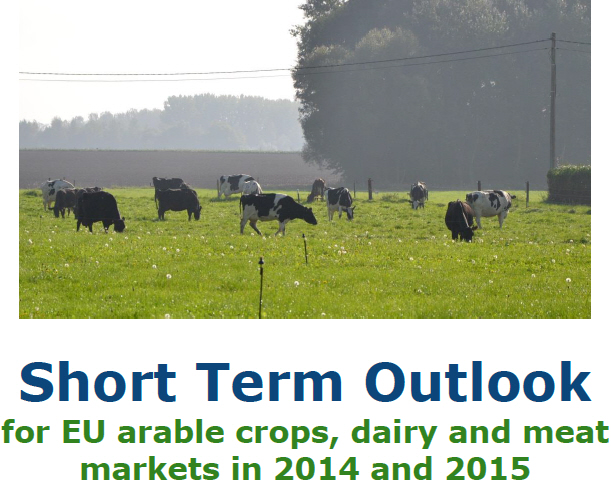



Mixed Prospects in EU Short-term Outlook for Arable, Meat, Dairy Markets
EU - Meat production is starting to recover in 2014 and 2015 after two years of low supplies, according to the latest short-term outlook from the European Commission.
The Short-term outlook is based on reflections of market experts within the Directorate General for Agriculture and Rural Development of the European Commission, using the latest data available. It is published three times per year (in late winter, early summer and early autumn).
Highlights
EU cereal harvest is forecast to set a new record in 2014, with strong exports and stocks expected to increase substantially.
The 2014 EU cereal harvest is expected to reach a record of 317 million tonnes, due to the combined effect of an increase in planted area and higher yields, favoured by good climatic conditions. This higher availability will not only benefit the livestock sector and exports, but would substantially replenish cereal stocks from 32 to more than 50 million tonnes, bringing the stock to use ratio up from 12 per cent to 18 per cent.
Record EU milk collection in 2014, coupled with strong world supply and the impact of the Russian import ban could lead to significant milk price decreases.
In parallel to the worldwide increase in milk production, EU milk deliveries in 2014 are expected to reach a record of 146.4 million tonnes. These developments, together with the introduction of the Russian import ban, contributed to the decline in dairy products prices (from record high levels). In the short run, part of the milk used to produce cheese destined to Russia is expected to be channelled into SMP and butter, while dairy operators look for export opportunities to other countries.
Meat production starts to recover in 2014 after two years of low supplies.
After three years of continuous decline, the increase in dairy herd will allow for some increase in beef production in 2014. The bans imposed on EU meat exports to Russia as of February slightly delayed the recovery in pig meat production, but 2014 sees continuous growth in EU poultry meat production.
On currency effects, the weakening of the euro against the US dollar since April supports EU competitiveness in world markets.
Further Reading
You can view the full Outlook report by clicking here.
To read the section of the report on poultry meat, click here.








